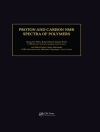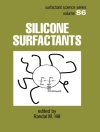Handbook of Museum Textiles
Textiles have been known to us throughout human history and played a vital role in the lives and traditions of people. Clothing was made by using different materials and methods from natural fibers. There are different varieties of textiles, out of which certain traditional textiles, archaeological findings, or fragments are of cultural, historical, and sentimental value such as tapestries, embroideries, flags, shawls, etc. These kinds of textiles, due to their historical use and environmental factors, require special attention to guarantee their long-term stability. Textile conservation is a complex, challenging, and multi-faceted discipline and it is one of the most versatile branches of conservation.
Volume 1 of the Handbook of Museum Textiles focuses on conservation and cultural research and addresses the proper display, storage, upkeep, handling, and conservation technology of textile artifacts to ensure their presence for coming generations. Spread over 19 chapters, the volume is a unique body of knowledge of theoretical and practical details of museum practices. Chapters on textile museums, the importance of cultural heritage, conservation, and documentation of textiles are covered in depth. Conservation case studies and examples are highlighted in many chapters. Management practices and guidelines to pursue a career in the museum textile field have been given due attention. The respective authors of the chapters are of international repute and are researchers, academicians, conservators, and curators in this field.
Audience
The book is a unique asset for textile researchers, fine art scholars, archaeologists, museum curators, designers, and those who are interested in the field of traditional or historic textile collections.
Über den Autor
Seiko Jose is a scientist at Central Sheep and Wool Research Institute, Avikanagar, Rajasthan, India, and specializes in textile chemistry. He has more than 16 years of experience in textiles of which 7 years in the industry and 9 years in research. He has extensive experience in cotton, silk, and linen processing industries as well as natural and synthetic dyes. Since 2013, he has handled many natural fibers like wool, jute, pineapple leaf fiber, coir, ramie, etc. He contributed to more than 40 international peer-reviewed research papers and 11 book chapters.
Sabu Thomas, Ph D, is the Vice-Chancellor of Mahathma Gandhi University, Kottayam, Kerala, India. He is a fellow of the Royal Society of Chemistry and has been ranked no.5 in India with regard to the number of publications. Prof. Thomas’s research group specializes in the areas of polymers, natural fiber, biocomposites, sorption and diffusion, interpenetrating polymer systems, recyclability and reuse of waste plastics and rubbers, elastomer crosslinking, dual porous nanocomposite scaffolds for tissue engineering, etc. He has published more than 1200 publications as well as over 150 books.
Pintu Pandit, Ph D, is an assistant professor in the Textile Design Department at the National Institute of Fashion Technology under the Ministry of Textiles, Govt. of India, Patna campus. He is a Ph D (Tech.) and M.Tech. in Fibers and Textile Processing Technology from the Institute of Chemical Technology, Mumbai, India. He has published many research articles in SCI journals as well as edited 4 books with the Wiley-Scrivener imprint.
Ritu Pandey, Ph D, is an assistant professor at Chandra Shekhar Azad University of Agriculture & Technology (CSAUAT) Kanpur, India She has 25 years of teaching experience. She has published more than 35 research papers in various national and international journals and her specialist area is in flax.
Vandana Gupta, Ph D, is a Professor and Head of Parul Institute of Design & Fine Arts at Parul University, Vadodara, Gujarat. She has worked in reputed fashion and design institutions and was awarded for her academic and administrative contributions. She has several research, review, and book chapter publications in the areas of sustainability, smart textiles, natural dyes, antibacterial and UV protective finishes, museums, and textile design.












